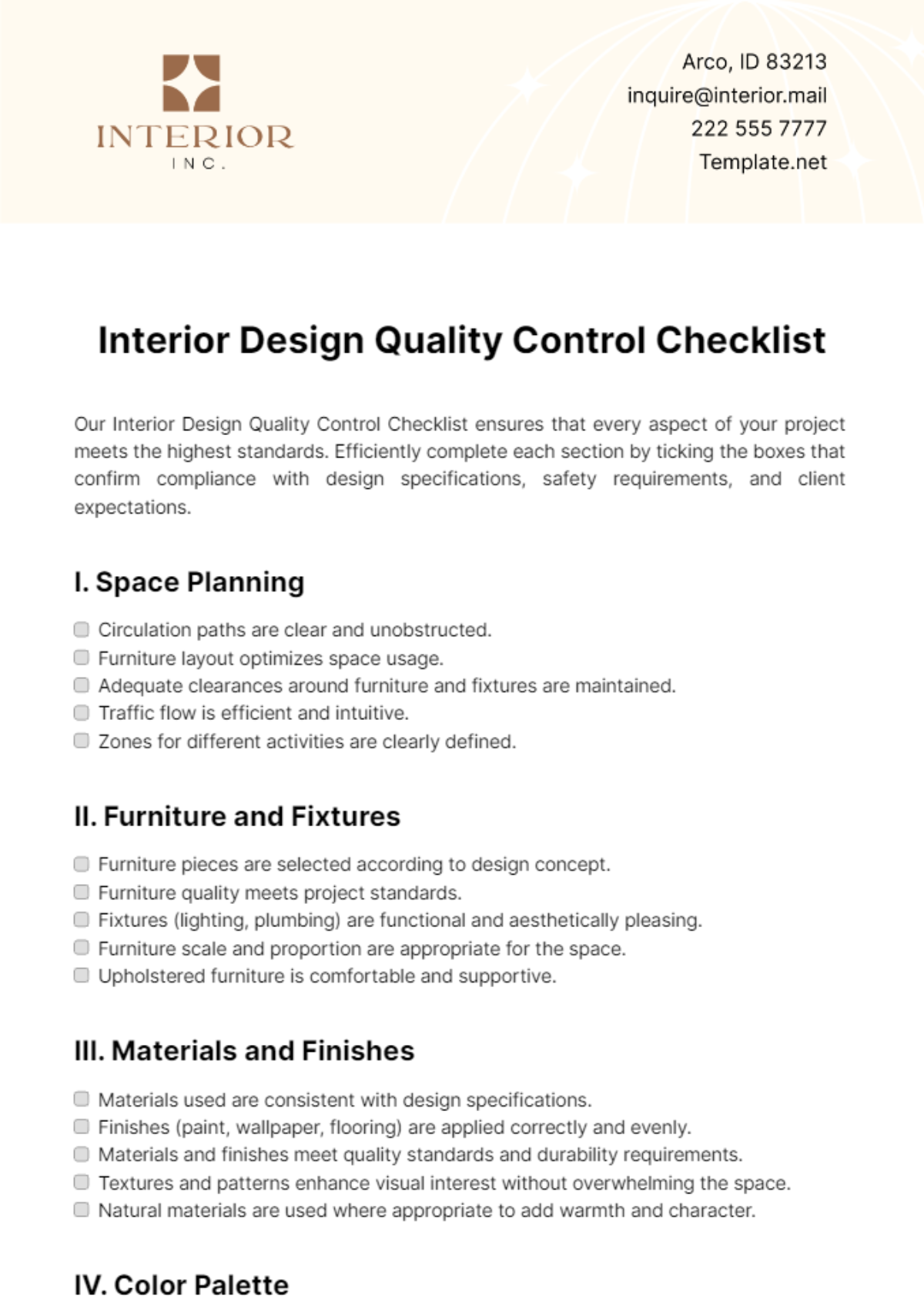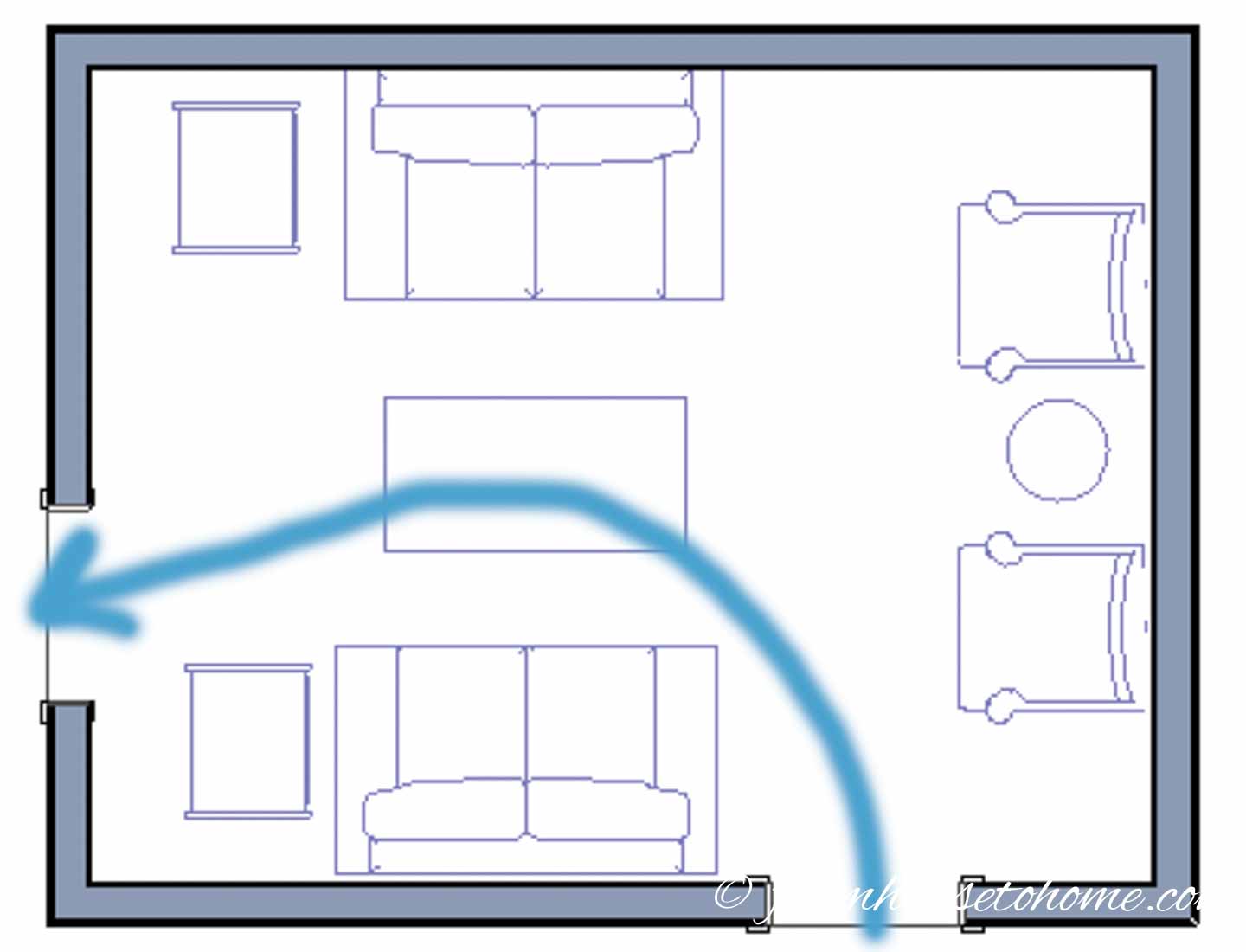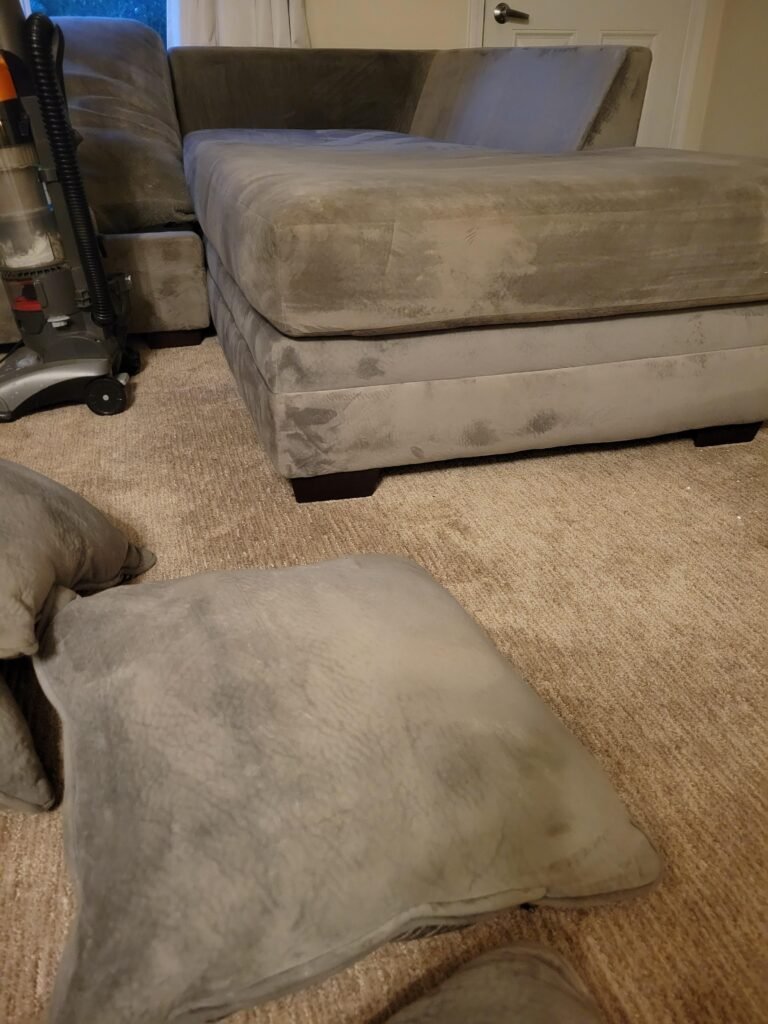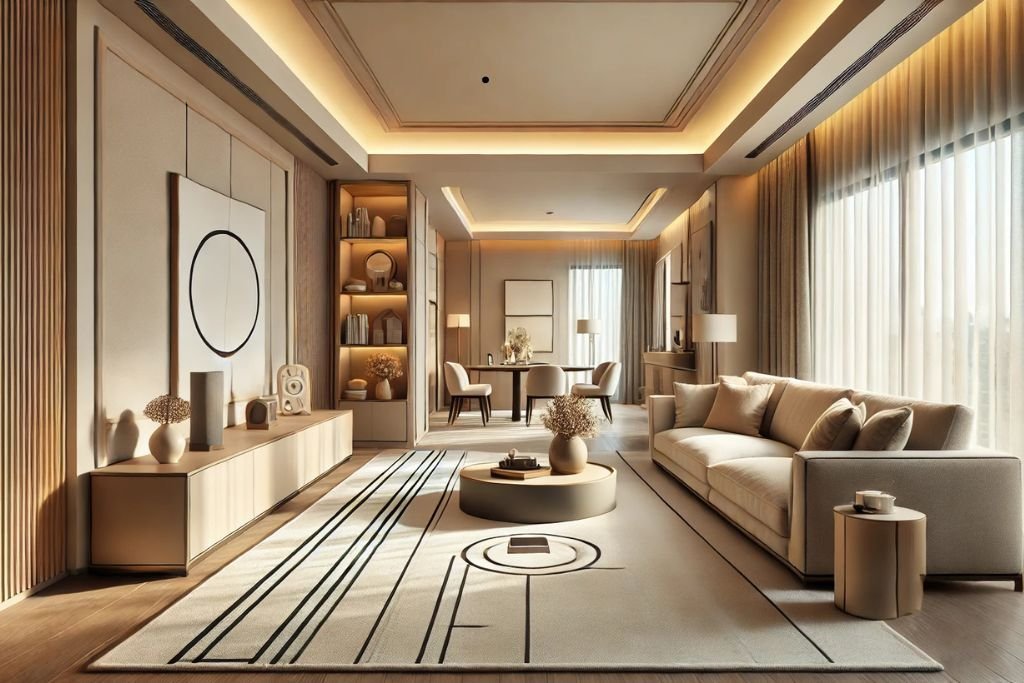As an Amazon Associate I earn from qualifying purchases.
Arranging furniture can control the flow of traffic in a room. Proper placement can make spaces functional and inviting.
Have you ever felt cramped in a room? Or struggled to move around freely? The way you place furniture can make a big difference. It can guide people naturally and ensure a smooth flow. You don’t need to be an expert.
Simple changes can transform any space. This blog will show you how to arrange your furniture. You’ll learn to create open paths and cozy corners. Ready to make your home more comfortable? Let’s dive in!
Introduction To Traffic Flow
Understanding the flow of traffic in a room is essential. Proper furniture placement helps create a functional, inviting space. Without it, rooms can feel cluttered and chaotic. This guide will introduce you to the concept of traffic flow in home design.
Importance Of Traffic Flow
Traffic flow determines how people move through a room. Good traffic flow ensures easy movement. It makes rooms feel spacious and inviting. Poor flow can make a space feel cramped and uncomfortable.
Proper traffic flow promotes safety. It reduces the risk of tripping over furniture. It also ensures that exits are easily accessible. This is crucial in case of emergencies.
Common Traffic Flow Issues
One common issue is blocked pathways. Large furniture can obstruct movement. This forces people to navigate around obstacles. It disrupts the natural flow of the room.
Another issue is overcrowding. Too much furniture can make a room feel small. It limits movement and can cause frustration. Less is often more when arranging furniture.
Improper furniture placement can also create dead zones. These are areas of the room that go unused. Good design maximizes every inch of space.
Assessing Your Space
Assessing your space is crucial for effective furniture placement. It ensures optimal traffic flow and functionality. Before arranging furniture, take time to evaluate the room. This step helps in making informed decisions that enhance comfort and movement.
Measuring Room Dimensions
Start by measuring the room dimensions. Use a tape measure to get accurate measurements. Write down the length and width of the room. This data helps in choosing the right furniture size. Avoid overcrowding by knowing your room’s limits.
Consider the height of the room too. Tall furniture might make a low-ceiling room feel cramped. Low furniture can make a high-ceiling room feel empty. Balance is key. Proper measurements prevent buying pieces that don’t fit.
Identifying High-traffic Areas
Identify high-traffic areas in your room. These are spots people use frequently. Entrances, doorways, and paths to other rooms are common high-traffic zones. Keep these areas clear of large furniture. Blocked paths can cause discomfort and accidents.
Observe your daily activities. Notice where you and your family move most. Place furniture in a way that doesn’t hinder these movements. A well-organized space promotes ease and efficiency.
Creating Clear Pathways
Creating clear pathways in your living space can greatly improve the flow of traffic. Proper furniture placement ensures that people can move around comfortably. This approach can also make your room look more organized and spacious.
Utilizing Open Space
Utilizing open space is essential for creating clear pathways. Arrange furniture in a way that leaves open areas. This helps to direct traffic smoothly through your room. Avoid placing large pieces in the middle of high-traffic zones. Use the edges of the room to position bulky furniture. This keeps the center free for easy movement.
Avoiding Obstacles
Avoiding obstacles is crucial for maintaining clear pathways. Ensure that no furniture blocks the natural flow of traffic. Keep walkways free of small items like stools or side tables. Place decorative elements in corners or along walls. This keeps the main paths unobstructed. Make sure doors can open fully without hitting any furniture. This simple step can make a big difference.

Credit: www.template.net
Choosing The Right Furniture
Choosing the right furniture is crucial for managing the flow of traffic in your home. The correct pieces can make a space feel open and inviting. Poor choices can lead to clutter and obstacles. Focus on size and function to create a comfortable environment.
Selecting Size-appropriate Pieces
Size matters when it comes to furniture. Large pieces in small rooms can overwhelm the space. Small furniture in big rooms can make the area feel empty. Measure your room before buying. Make sure each piece fits well without blocking pathways. Leave enough space for easy movement.
Opting For Multi-functional Furniture
Multi-functional furniture can save space and keep rooms organized. A sofa bed in the living room can provide seating during the day and sleeping space at night. Storage ottomans can double as seating and storage. These pieces help keep your home tidy and open. They also reduce the number of items needed in a room.
Strategic Furniture Placement
Strategic Furniture Placement plays a vital role in controlling the flow of traffic within a room. This involves carefully arranging your furniture to create a welcoming, functional space that guides movement naturally. Let’s dive into the aspects of strategic furniture placement to achieve this goal.
Anchoring With Larger Pieces
Start with anchoring the room using larger pieces of furniture. These items include sofas, beds, or large dining tables. Place them in a way that they draw the eye and set the tone for the room.
For example, position a sofa against a wall to create a central gathering spot. This allows for easy movement around the main seating area. In the bedroom, place the bed against the longest wall to maximize space and flow.
Key Points:
- Use large pieces to anchor the room.
- Position them to guide natural movement.
- Ensure they complement the room’s function.
Arranging For Flow
Once the larger pieces are in place, focus on arranging other items to enhance traffic flow. Ensure there is enough space between furniture for easy movement.
Use smaller pieces like chairs, side tables, and rugs to direct traffic. Place these items in a way that they complement the larger pieces and guide movement.
Consider creating clear pathways. For instance, leave at least three feet of space between the sofa and coffee table. This ensures easy navigation around the seating area.
Tips for Arranging:
- Leave enough space between furniture.
- Use smaller pieces to guide movement.
- Create clear pathways for easy navigation.
Remember, the goal is to create a space that feels open and inviting. With these strategies, you can control the flow of traffic and enhance the functionality of any room.
Using Furniture To Direct Movement
Using furniture to direct movement is an effective way to control traffic flow in your home. Proper placement of sofas, chairs, tables, and consoles can create natural pathways. This helps guide people through your space effortlessly. Let’s explore how strategic furniture arrangement can make a big difference.
Guiding With Sofas And Chairs
Sofas and chairs are essential for directing traffic. Place a sofa against a wall to create an open path. This allows people to move freely without obstacles. Arrange chairs to face a focal point, like a TV or fireplace. This encourages a natural flow towards that area.
Use armchairs to define boundaries. Position them at the corners of a room. This helps to create distinct areas for conversation and relaxation. The placement of seating can also guide traffic away from certain spots. For example, placing a chair near a doorway can block unnecessary foot traffic.
Positioning Tables And Consoles
Tables and consoles can also guide movement. A console table placed behind a sofa creates a clear path. This setup is ideal for open-plan spaces. It defines the living area while allowing easy movement around it.
Coffee tables should not obstruct walkways. Position them in the center of seating arrangements. This keeps the traffic flow smooth and uninterrupted. Side tables can be placed next to chairs to create small, accessible areas.
Dining tables can guide people towards the eating area. Place them in a well-lit, central spot. This naturally draws people in, creating a welcoming environment.
Incorporating Accessories
Accessories play a key role in shaping the flow of traffic within a room. Thoughtfully chosen items like rugs, lighting, and decorative pieces can guide movement and create a more harmonious space. Let’s explore some effective strategies for incorporating accessories to control traffic flow.
Utilizing Rugs For Pathways
Rugs can define pathways and encourage movement in specific directions. Place a narrow runner rug in a hallway to direct foot traffic. In a living room, use area rugs to create distinct zones, like a seating area and a dining space. This visual separation helps people navigate the room effortlessly.
Key points:
- Choose rugs that are proportional to the space.
- Ensure rugs are non-slip for safety.
- Match rug colors with the overall decor.
Adding Lighting To Highlight Routes
Proper lighting can illuminate pathways and make them more inviting. Use floor lamps or wall sconces to highlight main routes within a room. For example, place a floor lamp near the entrance of a living room to draw attention to the entryway.
Effective lighting tips:
- Use soft, warm lights for a cozy ambiance.
- Position lights to avoid shadows in pathways.
- Consider dimmable lights for flexibility.
By thoughtfully incorporating these accessories, you can enhance the flow of traffic and create a more organized and welcoming environment in your home.

Credit: www.fromhousetohome.com
Maintaining Flexibility
Maintaining flexibility in furniture placement is key to a functional home. It allows you to adapt to various needs and changes in life. By keeping your layout flexible, you can ensure that your space remains comfortable and practical. Let’s explore some ways to maintain flexibility with your furniture placement.
Rearranging For Different Needs
Sometimes, different activities require different setups. For example, hosting a dinner party might need more seating. Rearranging furniture can make your space more accommodating. Move chairs closer together for intimate gatherings. Push furniture against the walls to create an open area for activities. This approach keeps your home versatile and ready for any occasion.
Adapting To Seasonal Changes
Seasons change, and so should your furniture arrangement. In summer, you might want a more open space for airflow. In winter, you may prefer a cozy, clustered setup. Move furniture closer to the fireplace to create warmth. Shift seating to take advantage of natural light. Adapting your furniture placement with the seasons can enhance comfort and functionality.
Expert Tips And Tricks
Arranging furniture to control the flow of traffic in your living space can enhance comfort and functionality. Expert tips and tricks can help you achieve this with ease. Below are insights from professionals and common mistakes to avoid. Follow these guidelines to create a space that is both beautiful and practical.
Professional Insights
Professionals use their experience to arrange furniture efficiently. Here are some key insights:
- Create Clear Pathways: Ensure there is enough space for people to move around. Avoid blocking pathways with large furniture pieces.
- Anchor the Room: Use a focal point like a fireplace or a TV. Arrange furniture around this point to create balance.
- Use Area Rugs: Rugs define spaces and guide traffic flow. Choose the right size to fit the furniture arrangement.
- Consider Functionality: Think about the room’s purpose. Place furniture in a way that supports daily activities.
- Floating Furniture: Do not push all furniture against the walls. Floating pieces create better flow and more intimate spaces.
Common Mistakes To Avoid
Avoid these mistakes to maintain a smooth traffic flow:
- Overcrowding: Too much furniture can make a room feel cramped. Keep it simple and functional.
- Blocking Windows: Placing furniture in front of windows can block natural light. Ensure windows are clear to brighten the space.
- Ignoring Scale: Use furniture that matches the room’s size. Large pieces in small rooms can disrupt flow.
- Neglecting Traffic Patterns: Understand how people move through the room. Arrange furniture to accommodate these patterns.
- Skipping Measurements: Measure the room and furniture. This helps to plan the layout effectively.
Following these expert tips and avoiding common mistakes will help you control the flow of traffic with furniture placement. Remember, the goal is to create a space that is functional and inviting.

Credit: thehouseinsight.com
Frequently Asked Questions
How Does Furniture Placement Affect Traffic Flow?
Furniture placement can guide movement, create pathways, and avoid congestion. Proper arrangement enhances accessibility and comfort.
What Are Some Tips For Effective Furniture Placement?
Use a focal point, ensure clear pathways, and avoid clutter. Prioritize accessibility and balance in the room.
How Can I Create A Focal Point With Furniture?
Position a key piece, like a sofa or table, centrally. Surround it with complementary items to draw attention.
Can Furniture Placement Improve Room Functionality?
Yes, strategic placement maximizes space, enhances usability, and improves overall room functionality. It makes areas more practical.
Conclusion
Effective furniture placement can improve the flow of traffic at home. Arranging furniture thoughtfully creates space and makes movement easier. This can lead to a more comfortable living environment. Experiment with different layouts to find what works best. Small changes can have a big impact.
Enjoy the process and observe how your space transforms. Improving traffic flow through furniture placement can make your home more enjoyable and functional. Happy decorating!
As an Amazon Associate, I earn from qualifying purchases.


